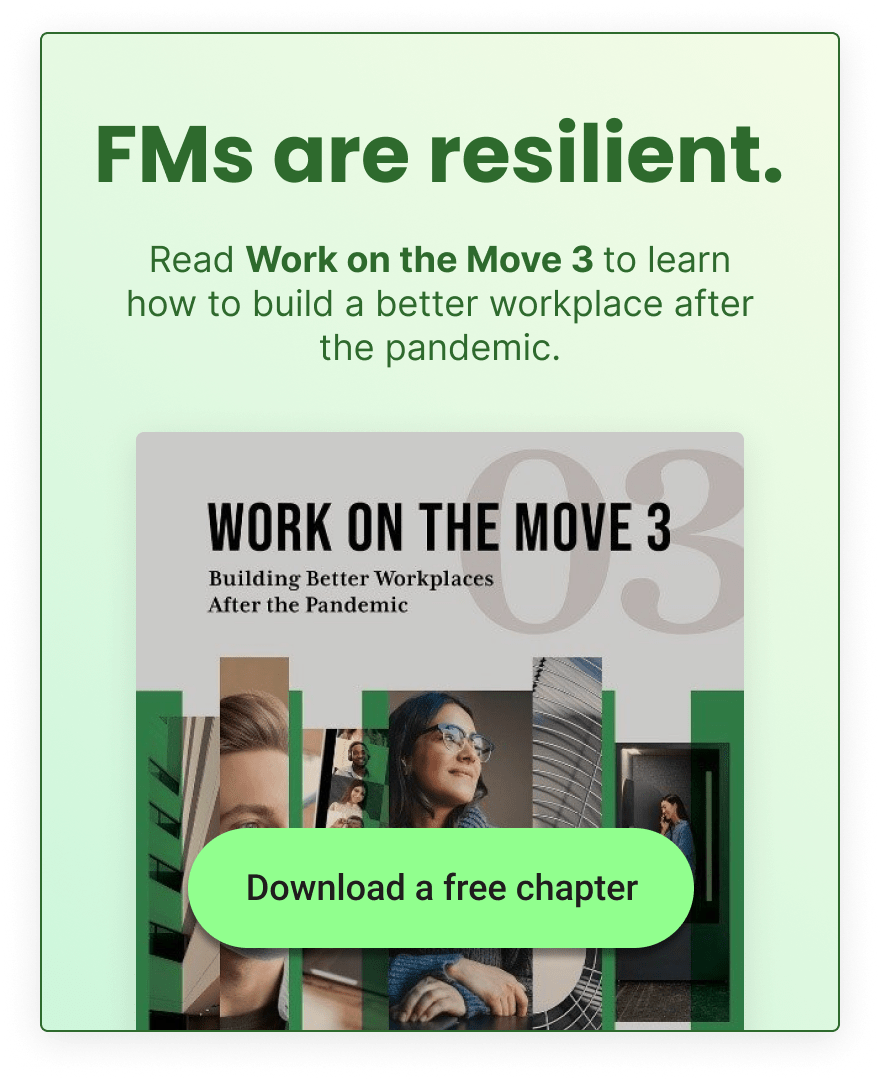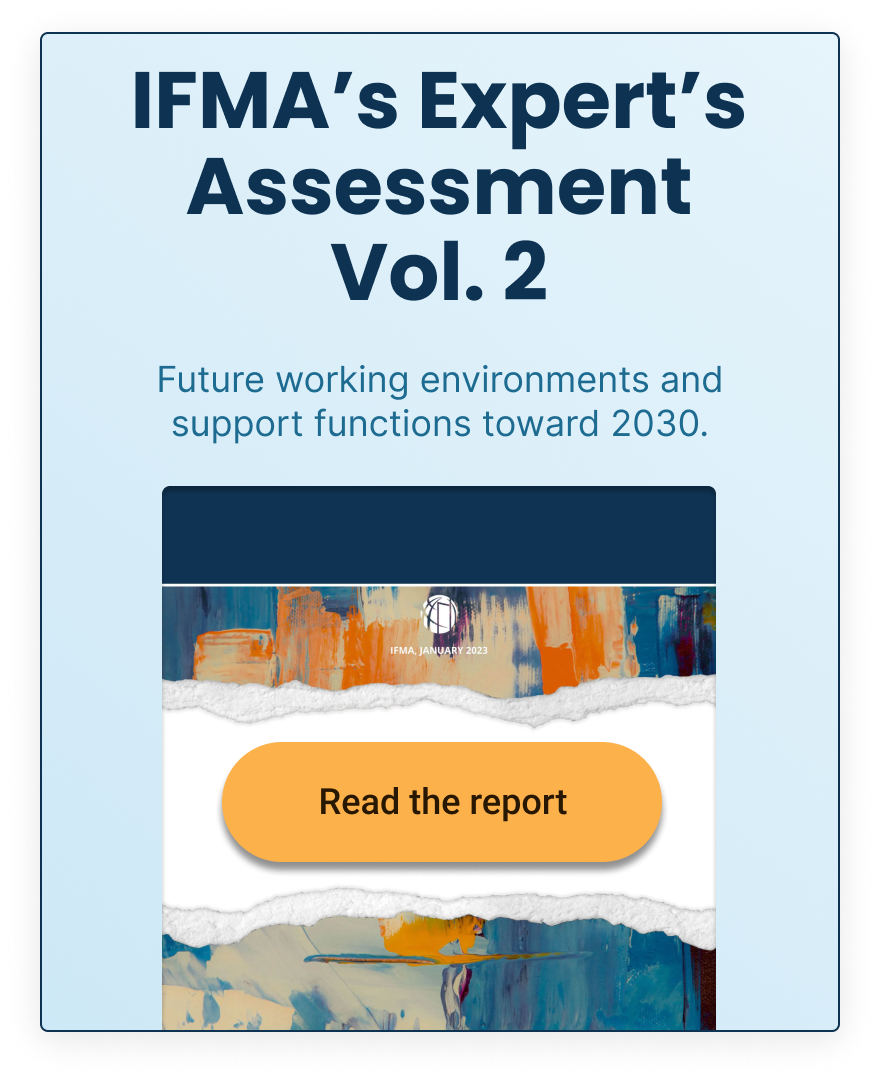Through the Lens of Time: A Longitudinal Review of Energy Efficiency
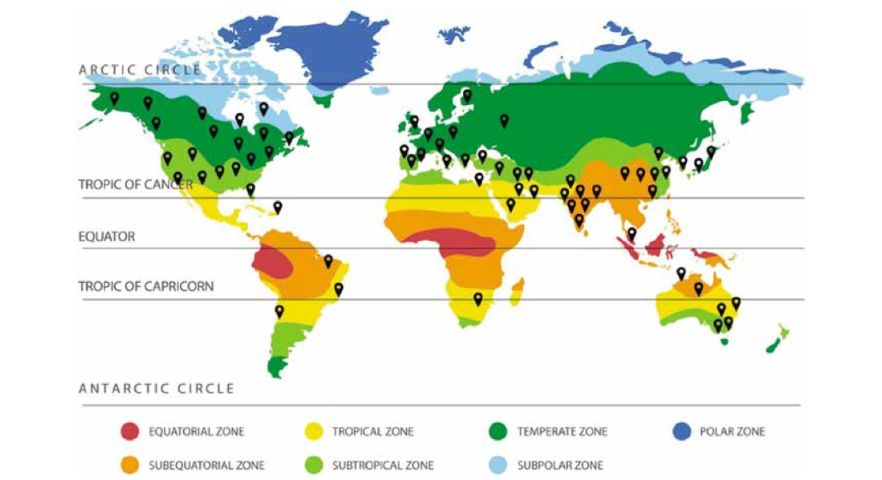
The goals of this study were to (a) conduct a systematic literature review of studies documenting the impact of a roofing membrane’s solar reflectance and albedo on a building’s energy efficiency; (b) synthesize the data and findings from the various studies; and (c) suggest areas where further research is warranted.
Feature
Through the Lens of Time: A Longitudinal Review of Energy Efficiency
By Vivek Sharma, PhD, LEED AP; and Dhaval Gajjar, PhD, FMP, SFP
This paper was presented at the 2023 IIBEC International Convention and Trade Show.
THE UNITED NATIONS’ Sustainable Development Report 20221 ranks the US 41st out of 163 nations based on the 2022 SDG Index score of 74.6 (SDG Index is an assessment of the country’s overall performance on the 17 Sustainable Development Goals [SDGs], giving equal weight to each goal). The country that was ranked first had a score of 86.5, whereas the country that was ranked 163rd had a score of 39. This report emphasizes the significance of having a sustainable building enclosure as a goal and area for progress for sustainable cities and communities.1 The building sector has a detrimental influence on the environment since it is the biggest user of raw resources and waste production.2 For example, nearly 40% of the total energy used in the US is used by residential and commercial buildings with both low-slope and steep-slope roofs.3
The energy used during the operation and maintenance of buildings includes the energy required for lighting, heating, cooling, and ventilation systems, as well as the energy used by electronics, appliances, and other equipment. Strategies to decrease energy consumption include improvements to building insulation, effective heating and cooling systems, and efficient building enclosures. According to Costanzo et al.,4 roofs comprise 20% to 25% of building surfaces in urban settings. Furthermore, roof systems are essential for a building’s thermal performance because they can account for up to 50% of the structure’s overall thermal load.5 Modifications to the roof’s surface, such as coating the roof surface to change the albedo value and the use of materials that alter the reflectance of the roof’s surface, are some of the ways to improve the energy efficiency of building enclosures.6
Key factors in the energy efficiency of roofing systems are solar reflectance and albedo. Solar reflectance is the roofing system’s ability to reflect solar energy into the atmosphere and is measured using the solar reflectance index (SRI) on a scale from 0 to 100. ASTM E1980-11
standards state that SRI = 100 for a standard white surface and SRI = 0 for a standard black surface.7 In this study, the terms solar reflectance and solar reflectance index have been used interchangeably. Albedo is the percentage of incident radiation reflected off a surface (such as the surface of a roof).8 The building’s temperature will rise as the building absorbs solar radiation that the roofing system does not reflect. A surface with an albedo value of 0 absorbs 100% of solar radiation, whereas a surface with an albedo value of 1 absorbs 0% of solar radiation.
To assess how changes in the solar reflectance and albedo of roofing systems affect energy efficiency, we collected and analyzed data from relevant studies published from 1990 to 2019. The goals of this study were to (a) conduct a systematic literature review of studies documenting the impact of a roofing membrane’s solar reflectance and albedo on a building’s energy efficiency; (b) synthesize the data and findings from the various studies; and (c) suggest areas where further research is warranted.
METHODOLOGY
A systematic literature review entails conducting a thorough search to find pertinent material. Databases, journals, conference proceedings, and other sources can be used in this type of review. In this study, we initially identified literature published between 1990 and 2019 with the following keywords: roof, energy efficiency, temperature, albedo, reflectance, and insulation. To narrow these results, we
Interface articles may cite trade, brand, or product names to specify or describe adequately materials, experimental procedures, and/or equipment. In no case does such identification imply recommendation or endorsement by the International Institute of Building Enclosure Consultants (IIBEC).
Table 1. Search results and database keywords
| Database | No. of articles found | No. of papers included in review |
| Engineering Village | 178 | 12 |
| ProQuest | 287 | 3 |
| ACM [Association for Computing Machinery] Digital Library | 1 | 0 |
| Web of Science | 234 | 7 |
| Business Source Complete | 20 | 2 |
| Academic Search Complete | 97 | 10 |
| Springer Link | 172 | 2 |
| Institute of Electrical and Electronics Engineers | 32 | 1 |
| Wiley Online Library | 71 | 2 |
| Office of Scientific and Technical Information | 121 | 5 |
| Clemson Library | 313 | 27 |
| Other Sources | 165 | 6 |
| Total | 1,691 | 77 |
Table 2. Selection of relevant articles
| Step | Results |
| Step 1: Initial identification based on keywords | 1,691 articles identified |
| Step 2: Refinement of selection based on inclusion criteria and study design | 747 articles selected |
| Step 3: Review of articles and abstracts to identify articles relevant to the aims of the literature review | 325 articles eligible |
| Step 4: Review of articles that include the effect of roofing systems on energy efficiency in the main body | 77 articles included |
then followed up with content and comparative analysis, in which we used various approaches to search dedicated words and word associations, such as narrative summary, content analysis, case, survey, and comparative analyses.9
Table 1 shows the results of a search that was run on 12 databases using the keywords and their Boolean logic combinations to identify potentially relevant publications across various databases.9,10 This initial search retrieved 1,691 articles. Table 2 summarizes the process for selecting the relevant articles. The inclusion criteria were (a) only peer-reviewed publications; (b) articles with data on various types of roofing systems and the impact of system type on energy efficiency as measured by cooling/heating energy usage, dollar savings, and temperature reductions; (3) cases from
anywhere in the world; and (4) authenticity of the source.11 Studies either compared the same type of roofing system for different locations or compared the same type of roofing system for varying albedo and reflectance values.
The factors that were extracted from the literature review included the sample size (number of roofs investigated), study locations and climates, the albedo of the roof membranes, the solar reflectance of the roof membranes, the types of roofing systems, relative energy savings from an original roof versus a modified roof, study limitations, and conclusions.
The sample size discussed in Table 3, representing the individual instances of roofs included in the studies was 538, of which 395 were low-slope roofs and 143 were steep-slope roofs. 52% of the sample
size evaluated existing roof membranes that were coated afterwards. In comparison, 19% measured the effect of change in the albedo value of the roof by applying a coating or modification to the membrane. 12% of the studies documented the effect of change in insulation, while 9% recorded baseline cases comparing different types of roofs. The distribution of studies across the climatic zones is listed in Table 3.
Albedo and solar reflectance values of the original roof and of the modified roof were documented. Energy efficiency is defined as the percentage change in energy usage between the original roof and the modified roof. The charts were then plotted using the above-recorded data points to interpret the relationship between solar reflectance or albedo of the modified
Table 3. Locations, climates, and sample sizes
| Location | Climates | Sample size for low-slope roofs | Sample size for steep-slope roofs | Total sample size |
| US | Temperate, subtropical | 202 | 65 | 267 |
| Asia | Temperate, subtropical, subequatorial | 79 | 15 | 94 |
| Europe | Temperate, subtropical | 64 | 27 | 91 |
| Other | Tropical, subtropical, equatorial, subequatorial | 50 | 36 | 86 |
| Total | 395 | 143 | 538 |
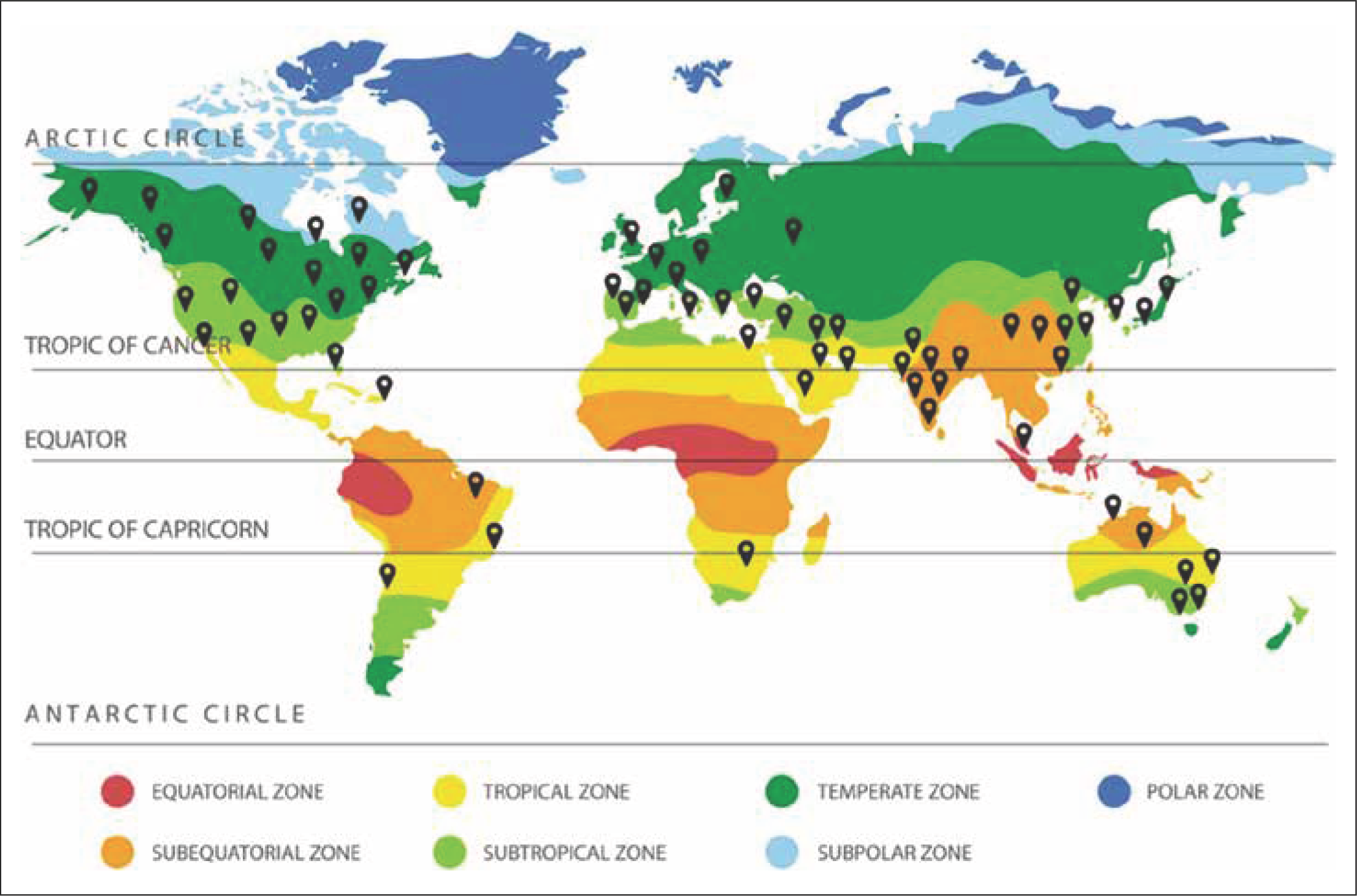
Figure 1. Geographical distribution of studies in the literature review.
roof with the energy efficiency calculated as a percentage difference.
RESULTS AND DISCUSSION
A systematic literature review was conducted to examine how reflectance and albedo affect a building’s ability to use energy efficiently. To accomplish this goal, 77 publications on the topic, including scholarly articles, technical reports, two literature reviews, and other pertinent publications were evaluated.
Data Sample
This study included published studies from the US, Asia, Europe, Australia, Africa, and South America. Table 3 and Fig. 1 show the sample sizes and the geographical distribution of studies, respectively. The studies were evaluated for the energy savings between the original roof system installed (those without any modifications, such as coating, membrane color, or changing R-value) and modified roofing systems.
Data Synthesis and Analysis
Figures 2 and 3 plot the effects of solar reflectance and albedo on the energy efficiency of buildings, where energy efficiency is defined as the percentage change in energy usage between buildings with the original roofing system and a modified roof roofing system. Energy usage was measured in GJ (gigajoules) per year and kWh (kilowatt-hour) per time or area (for example, kWh per m2 or kWh per day). Out of 77 studies, only 4 studies investigated
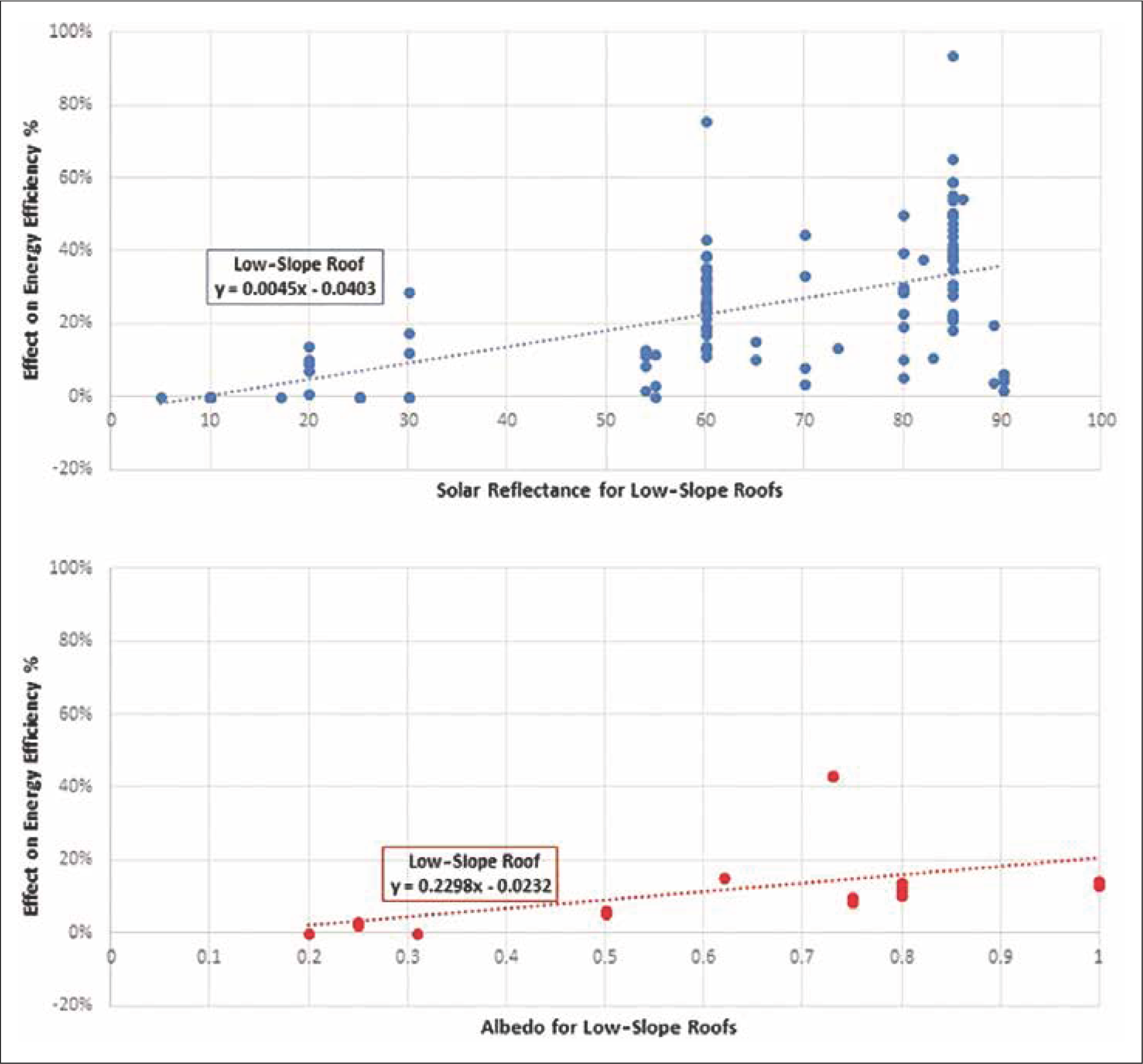
Figure 2. Effects of solar reflectance and albedo for low-slope roofs on energy efficiency.
utility bills, while 58 studies were modeled for energy usage.
Figure 2 includes data on low-slope roofing systems of all colors, and Fig. 3 includes data on steep-slope roofing systems of all colors. For every 10-unit change in solar reflectance, energy efficiency increases by 4.5% for low-slope roofs and 1.5% for steep-slope roofs. For every 0.1-unit change in albedo, energy efficiency increases by 2.2% for low-slope roofs and 5.5% for steep-slope roofs.
Based on the study, changing the albedo value of the roof and altering the reflectance value of the roof has a different effect on
energy efficiency on a low-slope roof versus a steep-slope roof. Higher energy efficiency is observed in low-slope roofs with a change in reflectance of the roof. In contrast, higher energy efficiency is observed in steep-slope roofs with a change in the albedo value of the roof.12
Table 4 identifies the parameters of the roofing system that the 75 studies (excluding the 2 literature-review studies) considered to be integral influences on energy efficiency. The table shows the number of studies that included or excluded each of the parameters. Notably, while all studies considered location to be a critical factor, only 36% of the studies considered
insulation as a key parameter. Further, 32% of the studies included albedo as an important factor, whereas 70% of the studies considered reflectance as an integral parameter.
CONCLUSION
The main objective of this study was to conduct a systematic literature review to offer a thorough examination of the roofing sector by synthesizing the results of past investigations. The literature review demonstrated that significant energy efficiency research has been conducted for different types of roofing systems. The findings of this systematic literature review indicate
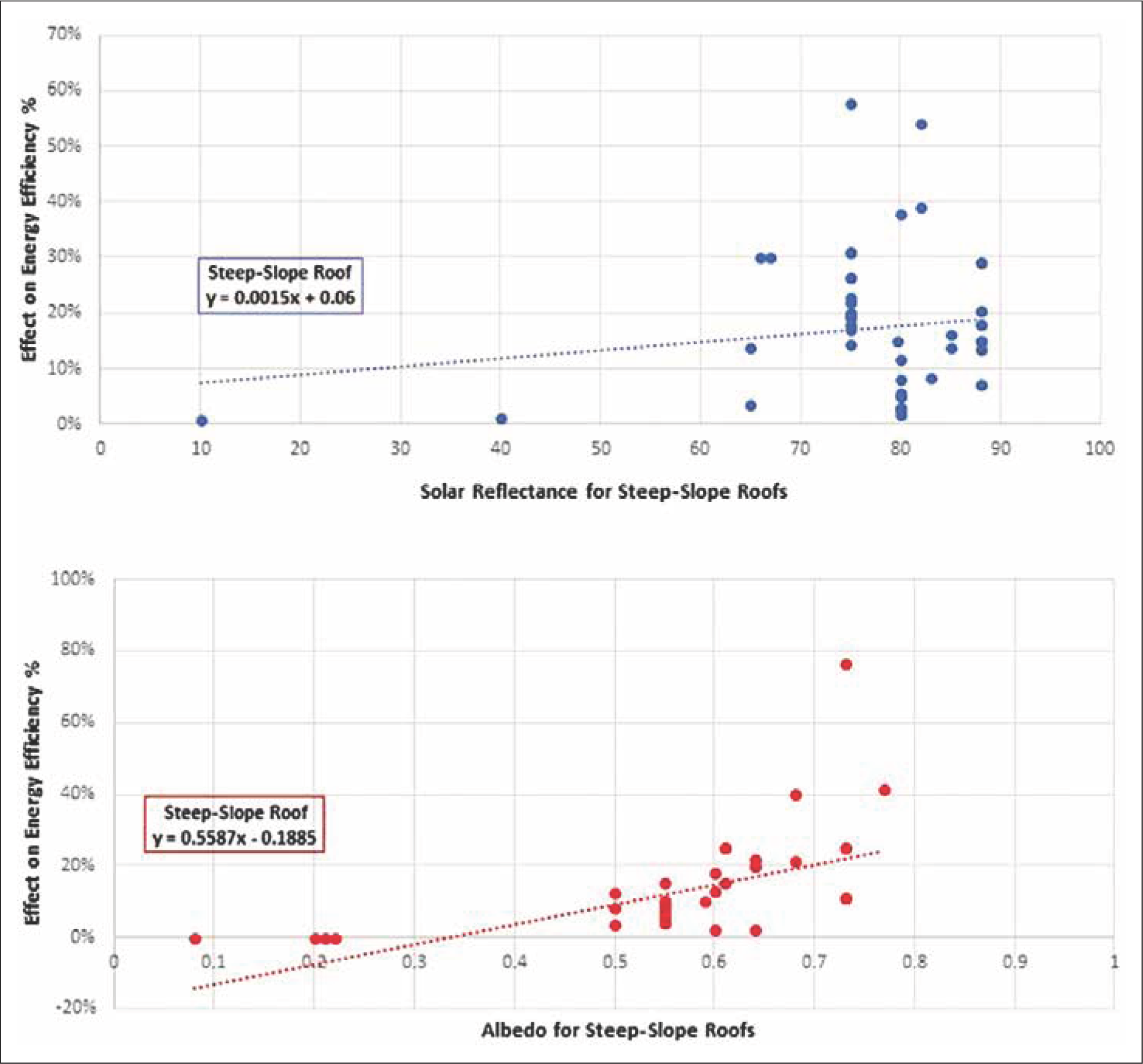
Figure 3. Effects of solar reflectance and albedo for steep-slope roofs on energy efficiency.
that as solar reflectance and albedo increase, energy efficiency also increases. The systematic literature review also identified other parameters that were included in the studies that impact a building’s energy efficiency.
Time of data capture was one of the parameters identified. Some of the observations from the literature review illustrate the need to evaluate the roofing system’s effects on energy performance over the entire year, rather than on data from specific months in the year. Additionally, the R-value of the insulation needs to be considered, which is essential because it can minimize heat energy loss in colder climates
and reduce heat gains in hotter ones. A higher balance of real-world studies is also necessary vis-à-vis simulation/energy-model-based studies. For meaningful comparison in dollar value, the cost savings need to be normalized for different regions because electricity prices can differ substantially from one place to another. Roofing systems also need to be compared in climate zones with similar climatic conditions to better assess the energy efficiency. In summary, along with solar reflectance and albedo value, it is recommended to consider other parameters such as the months in the year when the study was conducted, insulation R-value, energy costs,
and different climate zones to better assess the effects of roofing systems on energy efficiency. Life-cycle analyses would also be interesting to discover appropriate roofing materials and designs and evaluate energy savings throughout the life cycles of roofing systems.
This study acknowledges the breadth of research that has already been conducted in the roofing industry on the topic of energy efficiency. This study suggests a path forward for the roofing industry to direct and design future studies on energy efficiency that benefit the industry, buildings, and the environment.
Table 4. List of parameters used to study the effect on energy efficiency
| Parameter | Parameters included, no. of studies | Parameter not included, no. of studies | N/A* |
| Sample size (average) = 7.17 | |||
| Properties of roof | |||
| Color of roof | 48 | 27 | |
| Area of roof | 54 | 21 | |
| Insulation | 27 | 48 | |
| Solar reflectance | 52 | 23 | |
| Albedo | 24 | 51 | |
| Study design | |||
| Real-world study | 17 | 58 | |
| Simulation-based study | 58 | 17 | |
| Hot weather | 53 | 0 | 22 |
| Cold weather | 14 | 39 | 22 |
| Location | 75 | 0 | |
| Duration of data capture | 53 | 0 | 22 |
REFERENCES
- Sachs, J., G. Lafortune, C. Kroll, G. Fuller, and F. Woelm. 2022. Sustainable Development Report 2022: From Crisis to Sustainable Development, the SDGs as Roadmap to 2030 and Beyond. Cambridge: Cambridge University Press. https://www.sustainabledevelopment. report/reports/sustainable-development-report-2022/.
- Abergel, T., B. Dean, and J. Dulac. 2017. Towards a Zero-Emission, Efficient, and Resilient Buildings and Construction Sector: Global Status Report 2017. New York, NY: United Nations Environment and International Energy Agency.
- Seiferlein, K. E. 2004. Annual Energy Review 2004. United States. US Department of Energy Office of Scientific and Technical Information. https://doi.org/10.2172/1212310.
- Costanzo, V., G. Evola, and L. Marletta. 2016. “Energy Savings in Buildings or UHI Mitigation? Comparison between Green Roofs and Cool Roofs.” Energy and Buildings. 114: 247–255. https://doi.org/10.1016/j. enbuild.2015.04.053.
- Nahar, N., P. Sharma, and M. M. Purohit. 2003. “Performance of Different Passive Techniques for Cooling of Buildings in Arid Regions.” Building and Environment. 38 (1): 109–116. https://doi.org/10.1016/ S0360-1323(02)00029-X.
- Boixo, S., M. Diaz-Vicente, A. Colmenar, and M. Castro. 2012. “Potential Energy Savings from Cool Roofs in Spain and Andalusia.” Energy. 38 (1): 425–438. https://doi.org/10.1016/j.energy.2011.11.009.
- “Practice for Calculating Solar Reflectance Index of Horizontal and Low-Sloped Opaque Surfaces.” 2019. ASTM International, August. https://doi.org/10.1520/ e1980-11r19.
- Dobos, E. 2005. “Albedo.” In Atmosphere and Climate, edited by Y. Wang. Boca Raton, FL: CRC Press.
- Sharma, V., E. Mousavi, D. Gajjar, K. Madathil, C. Smith, and N. Matos. 2022. “Regulatory Framework around Data Governance and External Benchmarking.” Journal of Legal Affairs and Dispute Resolution in Engineering and Construction. 14 (2). https://doi.org/ 10.1061/(asce)la.1943-4170.0000526.
- Yoshii, A., D. A. Plaut, K. A. McGraw, M. J. Anderson, and K. E. Wellik. 2009. “Analysis of the Reporting of Search Strategies in Cochrane Systematic Reviews.” Journal of the Medical Library Association. 97 (1): 21–29. https://doi.org/10.3163/1536-5050.97.1.004.
- Susan A. Elmore and Eleanor H. Weston, “Predatory Journals: What They Are and How to Avoid Them,” Toxicologic Pathology 48, no. 4 (2020): 607–10, https://doi.org/10.1177/0192623320920209.
- Sharma, V., A. R. Dua, D. R. Gajjar, and H. Sharma. 2023. “Systematic Literature Review on Impact of Low-Slope vs. Steep-Slope Roof Membrane Color on Energy Efficiency.” (paper presentation, 13th International Conference on Construction in the 21st Century (CITC 13), May 8-11, 2023, Han University of Applied Sciences, Arnhem, Netherlands).
ABOUT THE AUTHORS
Vivek Sharma, PhD, LEED AP, focuses his research on capital project performance and life-cycle assessment, project data analytics, machine learning and artificial intelligence–technology integration, workforce, VIVEK SHARMA, and knowledge PHD, LEED AP management. Sharma helped develop and implement an external healthcare benchmarking program for the Construction Industry Institute funded by the US Department of Veteran Affairs and the US Department of Defense/Military Health System and a principal investigator for federal facilities data analytics research and application project. He chairs the Deployment (Healthcare Benchmarking and Professional Development) Subcommittee of the Facilities and Healthcare Sector Committee for the Construction Industry Institute, which is based at the University of Texas, Austin.
Dhaval Gajjar,
PhD, FMP, SFP is an assistant professor in the Department of Construction Science and Management in the College of Architecture, Arts, and Construction at Clemson University. DHAVAL GAJJAR, Gajjar has researched PHD, FMP, SFP construction workforce and talent attraction strategies, project delivery, project closeout, and post-occupancy evaluation. He is a certified Facility Management Professional (FMP) and Sustainable Facility Professional (SFP). He also has significant industry experience working as a project manager for a commercial general contractor and as a construction owner representative for large capital projects.
Please address reader comments to chamaker@iibec.org, including “Letter to Editor” in the subject line, or IIBEC, IIBEC Interface, 434 Fayetteville St., Suite 2400, Raleigh, NC 27601.

